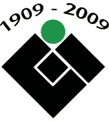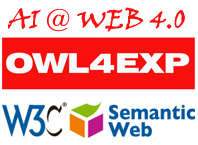Galileo Galilei 400 years telescope
Galileo Galilei
400 years telescope:
Scientific Method and
Artificial Intelligence
400 years ago today, on 25 August 1609, the Italian astronomer and philosopher Galilei Galileo showed Venetian Republic the telescope, the instrument that was to bring him both scientific immortality and, more immediately, a whole lot of trouble.
Soon he became successful at observing the sky. His telescope enabled Galileo to write the Starry Messenger; the book was published in Venice by 12, March 1610.
Galileo was the first to use a refracting telescope to make important astronomical discoveries pioneered experimental scientific method
Galileo devised a method that exhibits some provocative similarities to, and differences from, a Rasch approach to instrument design: Viewed as a whole, Galileo's method then can be analyzed into three steps, observation, hypothesis, and testings.
- Observation: Scientists are generally curious about their surroundings. This curiosity leads them to ask questions about the world around them.
- Hypothesis: As scientists formulate questions, they naturally try to answer those questions. Those attempts to answer questions lead to hypotheses, or some would say guesses, regarding the question's answer.
- Testing: Of all the steps in the scientific method, the one that truly separates science from other disciplines is the process of experimentation. In order to prove, or disprove, a hypothesis, a scientist will design an experiment to test the theory. An important aspect of scientific experimentation is repeatability. In other words, if two different people in two different parts of the world perform the same experiment, they should both get the same results.
A common misperception of science is that it defines "truth". Science is not truth, but rather it is a way of thought. It is a process by which experimentation is used to answer questions.
That Galileo actually followed these three steps in all of his important discoveries in dynamics is easily ascertainable from his frank biographical paragraphs, especially in the "Dialogues Concerning Two New Sciences."(all italicized quotations from Burtt)
It is important to realize that scientific method is not something fixed and ahistorical.
The recent advances in Artificial Intelligence have remarkable implications and cast
new light on the field of Philosophy of Science and more particularly on the
study of Scientific Method of Galileo (the way science is done). The long debate about
the nature of scientific method, known as the inductivist controversy, takes a
different form after examining advances in AI, such as machine learning and
logic programming.
On the other hand, it is true that philosophy has implications for AI. Many
thinkers (namely Godel, Lucas, Penrose) have argued that there is a limit to what
can be achieved by AI. That gives rise to questions of whether computers might
become more intelligent than humans.
• see Google for the Galileo Telescope 400th Anniversary
• see Galileo Galilei on NASA
• see On the Moon NASA astronauts prove Galileo Galilei was right
• see Telescope on Wikipedia
• see Galileo Galilei on Wikipedia
• see CEI Award Best Thesis, XIII edition - Italian Electric Committee
• see Semantic technologies for industrial purposes
• see My interactive video presentation
• see My slide presentation
» Press room
Main Areas...
contact:

CEI Award Best Thesis, XIII edition
Italian Electric Committee
1909 - 2009: 100 years next to you


